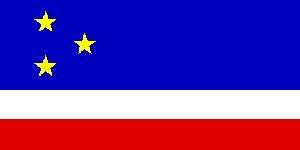
GAGAUZIA
Geographical Features
The Republic of Gagauzia is an autonomous republic of Moldova. It borders the Republic of Ukraine and the Republic of Moldova. Area: 1,800 km2. The capital is Komrat.
Population
The population of Gagauzia is 169,300. The Gagauz account for 82,5% of the population (137,500 people). The remaining people are Moldovans, Russians, Bulgarians and Ukrainians. The Gagauz are of the once numerous Oguzian tribes that settled in the south- western part of Europe in the 11th century.
Languages
The Gagauz are a Turkic-language people. There are three official languages in the Gagauz Republic: Gagauz, Moldovan and Russian.
Organisations
The Republic of Gaguzia is represented in UNPO by its legally elected representative body - the Supreme Soviet of Gagauzia.
Economy
The economy of Gagauzia is based primarily on agriculture, consisting of wheat and other grain production, cattle-breeding and viticulture.
Brief History
The Gagauz are a Turkic people in Moldavia. They derive from Turkic-speaking Oguz, Uz and Kumans who migrated from the north Black Sea area to the Dobrudja region in eastern Bulgaria in the Middle Ages.
- 1812: During the Russo-Turkish wars of the 18th and 19th c., the Gagauz, together with thousands of Bulgars, migrated to the southern parts of Bessarabia which became part of Russia. The Gagauz were encouraged to settle in these border-districts of present-day Moldova to prevent Rumanian annexation of Moldova.
- 1856: Territorial changes in the region put Gagauzia under Moldovan/Rumanian administration.
- W.W.II: As the Gagauz were being assimilated by Moldavians, the Soviet Union took Bessarabia/Moldova back from Rumania. The Soviets encouraged the Gagauz to russify. The territory of Gagauzia was divided between the Moldavian SSR and the Ukraine.
- 1980: The Gagauz campaign for self-determination began.
- 1989: A Law on Languages was enacted in Moldova, which was perceived as discriminatory by the Gagauz.
- 1990: By early 1990, the Gagauz in the Moldovan SSR began a movement for cultural and political autonomy, in response to Moldovan nationalism. They have struggled for several years now to get an autonomous territory within Moldova. When the Moldovans declared their independence in 1990, the Gagauz proclaimed their "16th Soviet Republic". In August Gagauz elections were suspended by the Moldovan government, and a state of emergency declared. An independent Republic of Gagauzia was proclaimed in several southern districts of Moldovo.
- 1994: The status of Republic of Gagauzia was recognised as an autonomous republic within Moldova. Gagauzia became member of the UNPO.
- 1995: The elections for the National Assembly of the Republic of Gagauzia were conducted. An end to the five-year conflict between Moldova and Gagauzia was officially declared.
Sources:
Unrepresented Nations and Peoples Organisation (UNPO)
Norwegian Institute of International Affairs [NUPI] - Centre for Russian Studies
Back to Caucasus main page
|

